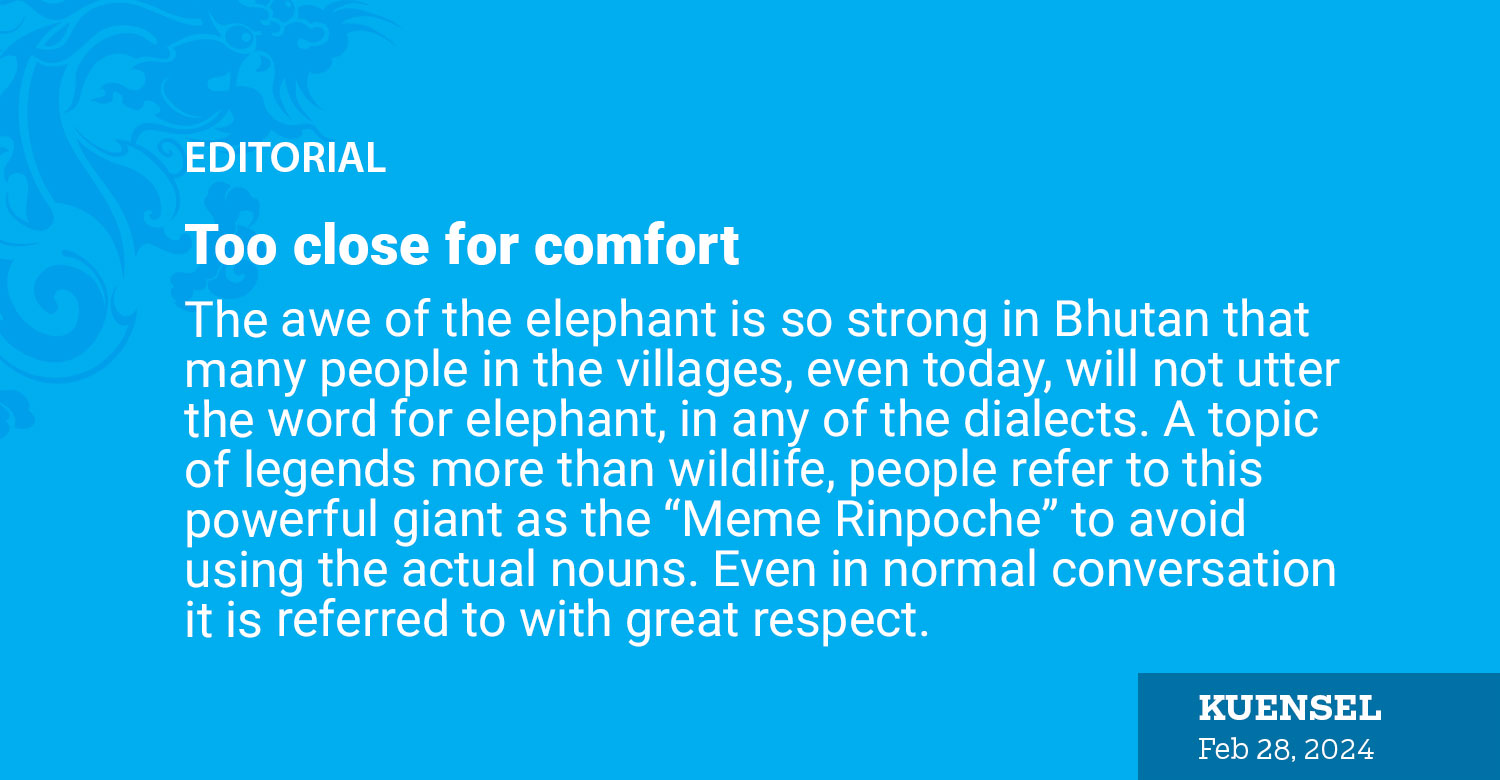The awe of the elephant is so strong in Bhutan that many people in the villages, even today, will not utter the word for elephant, in any of the dialects. A topic of legends more than wildlife, people refer to this powerful giant as the “Meme Rinpoche” to avoid using the actual nouns. Even in normal conversation it is referred to with great respect.
Even as planners and decision-makers lavishly wield key phrases like “sustainable development”, “ecological balance”, “biodiversity”, “Climate change”, “greenhouse effect”, the Bhutanese people have increasingly felt the practical issues. For example, we are producing an increasing amount of non-biodegradable waste, pollution from petrol and diesel fumes is increasing at an alarming pace, and urbanisation is gobbling up our apple orchards and paddy fields.
A more pressing issue is the frequent raids into crops, fields, and homes that have intensified over the recent years.
The recent incident in Tsakaling under Patshaling gewog, Tsirang, where a tusker caused extensive damage to houses, highlights the pressing issue of human-wildlife conflict that continues to plague communities across Bhutan. The fear and disruption caused by such encounters underscore the urgent need for effective and sustainable solutions to mitigate these conflicts.
For the residents of Tsakaling, encounters with wildlife, particularly elephants, have become increasingly frequent, posing significant risks to both lives and livelihoods. The measures taken by individuals, such as chopping down banana plants to deter elephants, exemplify the desperate attempts to protect property and ensure safety. However, such actions are temporary fixes that fail to address the root cause of the conflict.
The root cause of human-wildlife conflict in Tsakaling and similar communities lies in the shrinking habitats of wildlife, which forces animals to venture into human settlements in search of food and resources. As development encroaches upon natural habitats, wildlife populations are pushed into closer proximity with human settlements, leading to increased conflicts.
In the case of Tsakaling, the inability of farmers to tend to their citrus trees due to encounters with bears and elephants highlights the economic toll of human-wildlife conflicts. The loss of livestock and the reluctance to cultivate crops further exacerbate the challenges faced by residents, undermining their livelihoods and food security.
Addressing human-wildlife conflict requires a multi-faceted approach that balances the needs of both humans and wildlife. One crucial aspect of this approach is the conservation and restoration of natural habitats to provide adequate space and resources for wildlife populations. By preserving and connecting fragmented habitats, we can reduce the likelihood of wildlife encroaching into human settlements in search of food.
Community-based initiatives that promote coexistence between humans and wildlife are essential. This includes the implementation of effective crop protection measures, such as fencing and deterrents, to minimise crop damage and economic losses. Education and awareness programs can also empower communities to adopt sustainable practices and peacefully coexist with wildlife.
In addition to proactive measures, it is imperative to have mechanisms in place for responding to conflicts when they occur. This includes the establishment of rapid response teams trained in wildlife management and conflict resolution, as well as compensation schemes for individuals who suffer losses due to wildlife damage.
Collaboration between government agencies, conservation organisations, and local communities is essential for the successful implementation of these measures. By working together, we can develop holistic solutions that address the underlying causes of human-wildlife conflict while ensuring the long-term sustainability of both human communities and wildlife.


